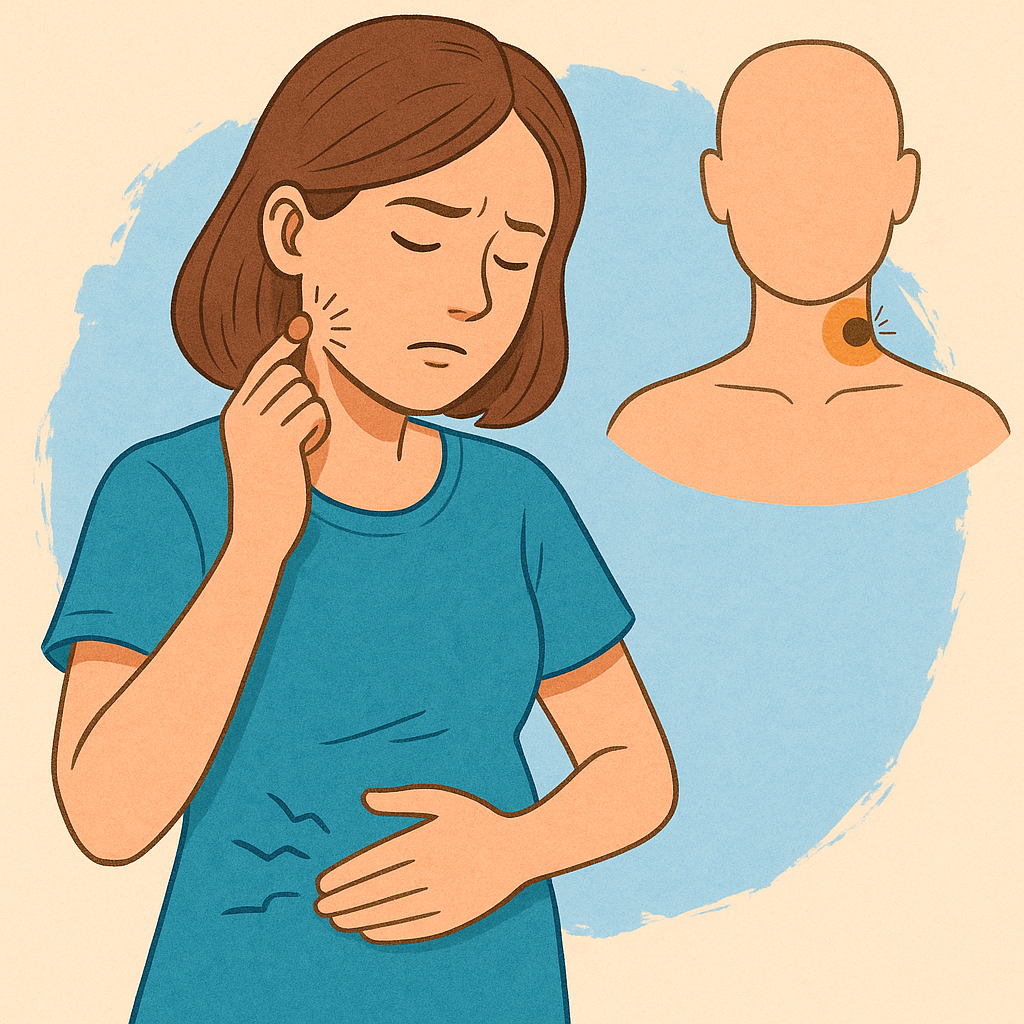THE EFFECTIVENESS OF SELF-ACCUPRESURE GUIDANCE ON THE REDUCTION OF PRIMARY DYSMINOREA PAIN

Downloads
Background: Incidence rates of Dysmenorrhea is average over 50% worldwide, with Indonesia reporting 55% and East Java specifically showing a prevalence of 71.3%. Dysmenorrhea can reduce sleep quality and have an impact on changes in a person's mood which will cause stress, depression and anxiety. The aim of this study was to determine the effect of self-accupressure guidance on reducing primary dysmenorrhoea pain in adolescent girls. Method:. This was a quasi-experimental design with a one-group pretest-posttest approach. The study population comprised all 66 female students at Manbail Futuh Vocational School. A purposive sampling technique was utilized to select participants who met specific inclusion criteria.This selection process resulted in a sample of 18 adolescent girls. Participants received standardized self-acupressure guidance. The intervention involved a structured guidance session followed by a period where participants were encouraged to practice self-acupressure daily during their menstrual cycle. Pain intensity was measured using a validated numerical rating scale (NRS) before the intervention and after the intervention, specifically during their subsequent menstrual period. The effectiveness of the self-acupressure guidance was assessed by comparing the pretest and posttest pain scores. Result: The results of the Wilcoxon test using SPSS For Windows software with a level of significance obtained p-Value 0.001 < 0.05. Based on the above, it is proven that there was an influence of self-accupressure guidance on reducing primary dysmenorrhea pain experienced by young women. Conclusion: Self-acupressure guidance was effective in reducing the intensity of dysmenorrhea in adolescent girls. This research can be used as one of the interventions in treatment other than using drugs.
Aminatussyadiah, A., Widiatami, T. and Amanda, A.V. (2023) 'The Effectiveness of Sp6 and Lr3 Acupressure on Reducing Dysmenorrhea Pain in D III Obstetrics Students of Stikes BCM', Borneo Scholar Journal, 7(2), pp. 33–39.
Fibrila, F., Ridwan, M. and Widiyanti, S. (2023) 'The effect of acupressure therapy in reducing dysminore pain in adolescent girls', Journal of Multidisciplinary Research, 1(6), pp. 1127–1132.
Hurin'in, N.M., Putri, F.A. and Puspitasari, P.N. (2021) '"Midwifery Pedia" as an E-Health Consultation Media on Reproductive Health and Its Problems', ABDIMASNU: Journal of Community Service, 1(2). Available at: https://doi.org/10.47710/abdimasnu.v1i2.81.
Indrayani, T., Astiza, V. and Widowati, R. (2021) 'The Effect of Acupressure on the Intensity of Dysmenorrhea Pain in Adolescent Girls in the Rw.03 Area, North Margahayu Village, Babakan Ciparay District, Bandung City', Journal for Quality in Women's Health, 4(1), pp. 94–103. Available at: https://doi.org/10.30994/jqwh.v4i1.109.
Julaecha, J. et al. (2024) 'Education on How to Overcome Dysmenorrhea with Acupressure at SMAIT Al-Azhar, Jambi City', Journal of Health Service (JAK), 6(2), p. 144. Available at: https://doi.org/10.36565/jak.v6i2.422.
Julaecha, J., Fatmawati, T.Y. and Wuryandari, A.G. (2023) 'The Effect of Acupressure on Dysmenorrhea in Female Students of the DIII Midwifery Study Program STIKes Baiturrahim', Baiturrahim Jambi Academic Journal, 12(1), p. 194. Available at: https://doi.org/10.36565/jab.v12i1.689.
Marlinda, M. et al. (2022) '3-Point Body Acupressure to Reduce Menstrual Pain', IMELDA Nursing Scientific Journal, 8(2), pp. 113–119. Available at: https://doi.org/10.52943/jikeperawatan.v8i2.1025.
Rosyita, K. et al. (2024) 'Difference in the Effectiveness of Cat Stretch Exercise with Lumbar Massage on Reducing Primary Dysmenorrhea at SMA Negeri 3 Tuban This study aims to compare the effectiveness of Cat Stretch Exercise and lumbar massage on the reduction of primary dysmenorrhea pain', 2(4).
Sari, I.D. and Listiarini, U.D. (2021) 'The Effectiveness of Acupressure and Ginger Drink on Reducing the Intensity of Menstrual Pain/Dysmenorrhea in Adolescent Women', Scientific Journal of Batanghari University of Jambi, 21(1), p. 215. Available at: https://doi.org/10.33087/jiubj.v21i1.1154.
Selvia, A. and Amru, D.E. (2021) 'The Relationship between Knowledge and Attitudes of Adolescent Women in Overcoming Menstrual Pain with Acupressure Techniques', EDUNursing Journal, 5(2), pp. 128–133. Available at: http://journal.unipdu.ac.id.
Walidaini, R. (2022) 'The Effect of Acupressure on Menstrual Pain in Adolescents at SMA 08 Pekanbaru', Indonesian Health Scientific Journal, 7(1), pp. 87–95. Available at: https://doi.org/10.51933/health.v7i1.787.
Copyright (c) 2025 Nur Maziyah Hurin'in, Siti Nur Indah

This work is licensed under a Creative Commons Attribution-ShareAlike 4.0 International License.
1. The journal allows the author to hold the copyright of the article without restrictions.
2. The journal allows the author(s) to retain publishing rights without restrictions
3. The formal legal aspect of journal publication accessibility refers to Creative Commons Atribution-Share Alike 4.0 (CC BY-SA).
This Journal (e-ISSN 2656-7806) is licensed under a Creative Commons Attribution-ShareAlike 4.0 International License.
















